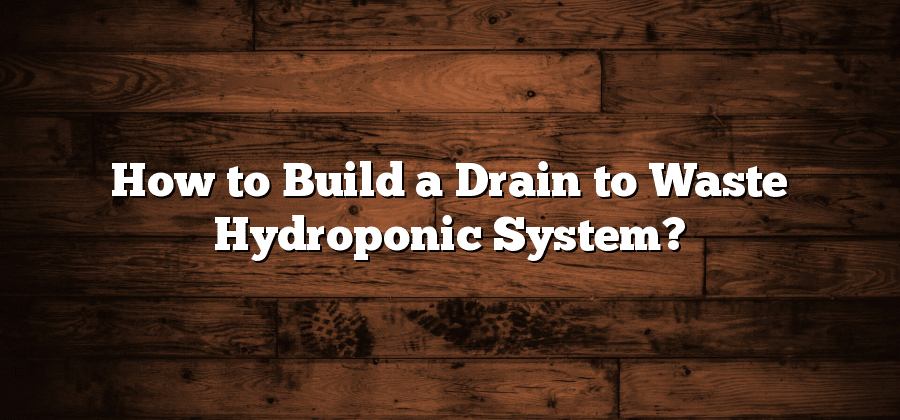Understanding the Basics of Hydroponics
Hydroponics, a method of growing plants without soil, has gained increasing popularity among both commercial growers and home gardeners. This innovative technology allows plants to thrive in a controlled environment, where nutrients and water are delivered directly to the roots. By removing the need for soil, hydroponics offers numerous benefits such as faster growth rates, higher crop yields, and the ability to grow plants in areas where soil quality is poor or limited.
In hydroponics, plants are typically grown in nutrient-rich solutions or mediums that provide the necessary support and nutrition. These mediums can range from inert substances like perlite or vermiculite to more organic materials like coconut coir or Rockwool. The choice of medium depends on factors such as the type of plants being grown, availability, and personal preference. Regardless of the medium chosen, the key principle in hydroponics is to ensure that plants receive the essential nutrients they need for healthy growth, without the need for soil.
Selecting the Right Components for Your System
When it comes to selecting the right components for your hydroponic system, it is crucial to consider the specific needs of your plants and the overall goals of your project. The components you choose will directly impact the success of your system, so it is essential to make informed decisions.
First and foremost, you need to select an appropriate reservoir for your hydroponic system. The reservoir serves as the primary storage for your nutrient solution, so it should be durable, easy to clean, and resistant to UV degradation. Additionally, consider the size of the reservoir in relation to the number of plants and the type of growing system you plan to use. Adequate capacity is essential to ensure a stable nutrient supply for your plants throughout their growth cycle.
Setting Up the Reservoir and Nutrient Solution
To ensure the success of your hydroponic system, setting up the reservoir and nutrient solution is a crucial step. The reservoir serves as the storage container for the nutrient solution that will be used to feed your plants. When setting up the reservoir, it is important to choose a container that is large enough to hold an adequate amount of solution for your plants’ needs. Additionally, consider using a container that is light-proof to prevent algae growth, as well as one that is made of a material that is not reactive to the nutrient solution.
Once you have selected the appropriate container for your reservoir, it is time to mix the nutrient solution. This solution is the vital source of nutrients for your plants, so it is important to get the proportions right. Follow the instructions provided by the manufacturer of your nutrient solution, as different plants may require different nutrient ratios. Make sure to measure the solution accurately using a reliable measuring tool, and mix it thoroughly to ensure all the nutrients are evenly distributed. It is also recommended to monitor the pH level of the solution and adjust it if necessary, as the ideal pH range for hydroponic plants is typically slightly acidic.
Designing the Drainage System for Optimal Efficiency
Effective drainage is a crucial component of any hydroponic system, as it ensures that excess water is properly removed from the growing area. A well-designed drainage system not only prevents water from accumulating and potentially damaging the plants, but it also helps to maintain the optimal balance of nutrients and oxygen in the growing medium.
When designing the drainage system for your hydroponic setup, there are several key factors to consider. Firstly, it is important to choose the right type of drainage system that suits your specific needs and the size of your growing area. Options such as top feed, bottom feed, or drip systems are all commonly used in hydroponics and offer different advantages depending on the plants being grown and the available space. Secondly, the slope and positioning of the drainage pathway should be carefully planned to ensure efficient water flow and prevent any pooling or stagnant areas. By ensuring that the water drains away effectively, you can prevent the growth of harmful bacteria and fungi that thrive in damp environments.
In addition to the layout and positioning of the drainage system, it is essential to select appropriate materials that are resistant to water damage and corrosion. PVC pipes and fittings are commonly used due to their durability and affordability. However, be sure to choose the right size of tubing to ensure optimum water flow and reduce the risk of clogging. Regular maintenance and cleaning of the drainage system are also important to prevent any blockages or buildup of debris that could impede water flow. By investing time and effort into designing an efficient drainage system, you can create optimal growing conditions for your hydroponic plants and maximize their growth potential.
Choosing the Perfect Growing Medium for Your Plants
When it comes to hydroponics, selecting the right growing medium is crucial for the success of your plants. Unlike traditional soil gardening, hydroponics relies on a medium that provides support, oxygenation, and nutrient absorption to the plant roots. There are several options available, each with its own advantages and disadvantages.
One popular choice is rockwool, a versatile and widely used medium made from spun molten rock or recycled slag. Rockwool retains moisture well while also allowing for ample oxygenation. Its fibrous structure provides excellent support for the roots and prevents them from becoming waterlogged. However, it is important to note that rockwool is non-biodegradable and requires proper disposal once used.






